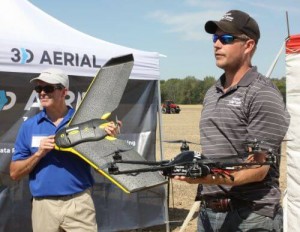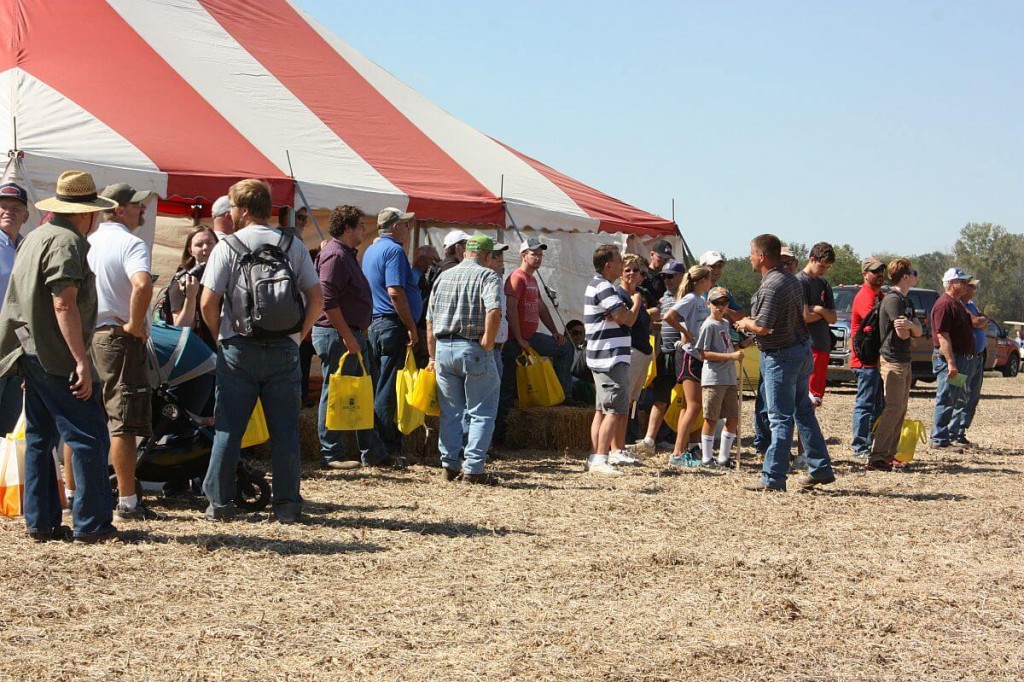LONDON, Ohio — Indiana farmer Aaron Sheller learned the old 20/2 method of crop scouting from his late father: You drive along the field going 20 mph with the two front pickup windows open.
When you’ve got a lot of acreage to scout, sometimes it’s a windshield tour, at best, that gets the job done.
That was then.
Today, Sheller sends up an unmanned aerial vehicle, or drone, to get a more accurate picture of what’s really going on out in his fields.
In fact, he believes so much in the technology, that he started a new company, Precision Drone, with co-owner Matt Minnes, that builds its products right on the Sheller farm.
Farm Science Review demos

Precision Drone was one of two companies demonstrating their drones at this year’s Farm Science Review. The Precision Drone model was a helicopter-style drone, while the drone demonstrated by Dayton, Ohio-based 3D Aerial Solutions was a fixed wing model. It was the third year for drone demonstrations at the Review, and farmers’ questions have moved from idle curiosity to management potential.
“Now they want to know, ‘how can it help my operation?’” Sheller said.
“There’s value and return on investment in finding problems before the combine,” Minnes added.
Management tool
John Fulton, Ohio State’s new specialist in precision ag technology, agrees.
“There’s a lot of excitement, a lot of uses, but it’s the data that farmers need to make decisions,” Fulton said during the Review.
Among other things, drones can detect crop damage, plant populations or stand counts, and help determine fertility placement and management. Near-infrared light cameras can measure changes in a field’s plants before you can see it. Healthy vegetation absorbs most of the visible light that hits it, and reflects a large portion of the near-infrared light. The normalized difference vegetation index, or NDVI, then describes the health of vegetation for each plot and, over time, can show a variation — think plant stress — to what’s “normal,” often long before the human eye can detect that stress.
“Once you’ve seen stress in the fields, you’ve already lost yield,” Sheller said.
Because the drones are following specific flight plans and linked to GPS, farmers can pinpoint exactly where the problem spots are in a field.
“We’re using geo-referenced, crop scouting to create precise, yield-based management solutions,” Sheller said.
No one has time to watch all the video footage a drone’s flight generates, but the still images tell the true story, he added. From a single drone image that reveals a potential problem, farmers can walk straight to the exact problem spot in the field.
Studying potential
Ohio State’s ag engineering department has been hot on the drone trail since the beginning, and has been working with the Ohio/Indiana Unmanned Aircraft Systems Center in Springfield, Ohio. The Federal Aviation Administration has granted authorization for drone research flights at the university’s Molly Caren Agricultural Center, home of the Farm Science Review.
“We’re looking at drones, the utility of drones, and where they apply to agriculture or to transportation,” Fulton said.
There’s a lot of engineering and technology involved in unmanned aerial flights and the information they can generate, he added. There’s the engineering of controlling the aircraft’s pitch, yaw and roll; there’s the accuracy of data acquisition and GPS systems; there are different types of cameras; there’s streaming technology; there are weather variables; and, of course, there are different types of drones.
You can plan to drop about $20,000 for a complete drone package like the ones at this year’s Review.











